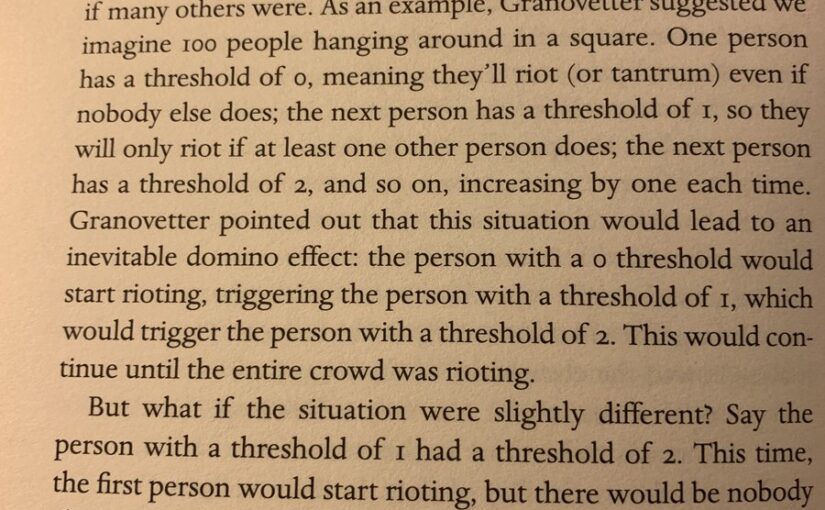Pitts put it. ‘A one-man riot is a tantrum.’ So how does a riot grow from a single person? In 1978, Mark Granovetter published a now classic study looking at how trouble might take off. He suggested that people might have different thresholds for rioting: a radical person might riot regardless of what others were doing, whereas a conservative individual might only riot if many others were. As an example, Granovetter suggested we imagine 100 people hanging around in a square. One person has a threshold of 0, meaning they’ll riot (or tantrum) even if nobody else does; the next person has a threshold of 1, so they will only riot if at least one other person does; the next person has a threshold of 2, and so on, increasing by one each time. Granovetter pointed out that this situation would lead to an inevitable domino effect: the person with a 0 threshold would start rioting, triggering the person with a threshold of 1, which would trigger the person with a threshold of 2. This would continue until the entire crowd was rioting.
But what if the situation were slightly different? Say the person with a threshold of I had a threshold of 2. This time, the first person would start rioting, but there would be nobody else with a low enough threshold to be triggered. Although the crowds in each situation are near identical, the behaviour of one person could be the difference between a riot and a tantrum. Granovetter suggested personal thresholds could apply to other forms of collective behaviour too, from going on Strike leaving a social event.
Excerpt from: The Rules of Contagion: Why Things Spread — And Why They Stop by Adam Kucharski


